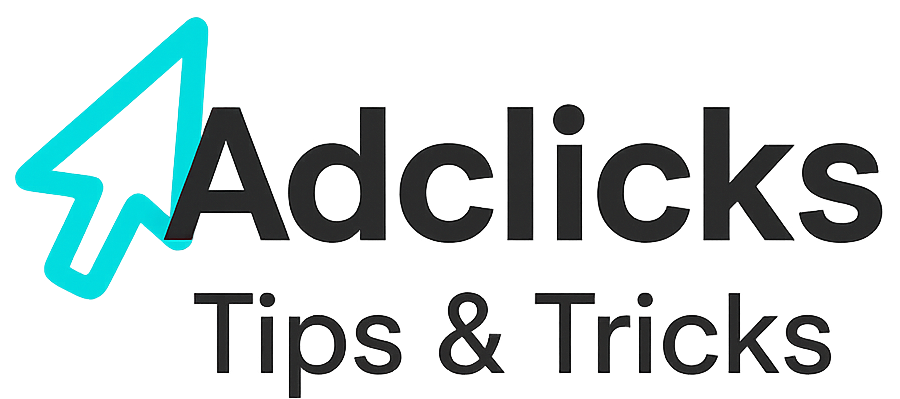Monetising DeviantArt
DeviantArt is a city of studios and sketchbooks where attention forms around images, comments, and the quiet rhythm of watching artists grow. People come to browse, save, and talk about work that sits between fan worlds and original universes, and they click out when you offer a tool or story that helps them make or understand something right now.
If you meet that moment with a page that finishes the promise of your post—a brush download that actually installs, a short process demo that solves a specific problem—you will earn the visit and often a second pageview. Keep the commercial layer calm on first contact; when you need understated contextual support, let a single, predictable placement ride on Adclicks.
How attention really moves here
Discovery is image-first, then creator-first. A viewer hits artwork, opens the description, checks your Gallery, glances at your About, and watches for process notes or download links. This isn’t a place where listicles rule; it’s a place where screenshots, PSDs, brushes, and steps do the convincing, and where comments function as quick, public proof that your resources work for others.
That flow rewards posts that link to one precise result on your domain and confirm it in the first screen. Keep the link language literal—“download this brush pack,” “see how I colored this panel,” “grab the printable model sheet”—and let everything else sit below. If monetization must appear, keep it subtle; when you need relevant backfill that won’t jolt the reader, standardize a quiet slot via Adclicks.
The traffic picture in plain language
In August 2025, Similarweb estimates deviantart.com at about 94.7 million visits, ~14.6 pages per visit, an average session time near 8 minutes 25 seconds, and a bounce rate around 30.7%. Country share skews to the United States at roughly 42%, with Germany, the United Kingdom, Canada, and Russia following at single-digit shares. These numbers describe a deep-scrolling audience, not a drive-by crowd.
Who shows up—and why they click out
Audience composition trends young and heavily male. Similarweb shows a majority male split (about 72%) with the largest age band at 18–24, which maps to gaming, anime, comics, and tools that make these worlds easier to create. The reader is often a maker—or wants to be—and responds best when your page gives them something they can use within the minute.
That is why a focused resource works: a download that installs without drama, a color-grading LUT that shows clear before/after, or a step-by-step that fixes a common panel problem. On first visit, present the solution before the story. Keep any ad load restrained; if you need context-sensitive demand that won’t crowd the canvas, reserve a single lower block for Adclicks.
Interests that travel—and how to meet them
Similarweb’s audience interests for DeviantArt cluster around video game hardware and culture, animation and comics, and adjacent tech, with “other visited” sites including Pixiv, Patreon, and FurAffinity. That tells you your best crossovers: tutorials for stylized characters, game-ready assets, rigging and shading explainers, and honest posts about commissions, merchandise, and printing. It also signals why “resources and stock” categories are long-lived: they’re practical. Similarweb
Design your posts to tease the action and your landing pages to deliver it. A post that shows a 10-second timelapse of a brush at work and links to a page where the brush installs in two clicks will always outperform a vague “read more.” If you need a measured revenue spine beneath downloads and examples, keep a single contextual unit consistent through Adclicks so the page stays fast and focused.
Publisher fit: who actually benefits from a DeviantArt encounter
Hands-on publishers thrive first: sites that teach illustration, comics, concept art, 3D, VFX, and cosplay construction; studios and toolmakers willing to share small, real pieces of their pipeline; education teams that convert a technique into a printable guide; indie game devs with asset-light builds and honest devlogs. The common thread is utility over mystique.
Commerce can fit, but it should trail usefulness. An art-supply shop that posts a crisp nib or paper comparison with downloadable swatches and transports readers to a clean, well-lit product page will be welcomed. A wall of product boxes will not. If the numbers have to add up for free resources, avoid stacking ad slots; hold the line at one or two sensible placements and lean on Adclicks to keep the fill relevant without flooding the viewport.
Your presence: use Posts and About like a studio door
DeviantArt’s Posts are your short-form proof of work. Use them to show how you got from sketch to finish, what went wrong, and—crucially—what you’re giving the reader next. Treat your About as a receptionist: one sentence on who you serve, one line on what your site delivers, and a single, unmissable link that matches your current series. Keep it current; stale About pages bleed clicks.
On every post, align the callout to a specific action on your site and repeat that promise in your artwork description. If the action is “download the brush,” your first screen after the click should be the download, not a newsletter gate. Once you’ve proved the value, invite the reader into a deeper tutorial or course. Where you need ad support to keep the resources free, start light and consistent; a dignified in-content placement filled by Adclicks will behave more predictably than a rotating stack.
Post formats that pull clicks without feeling like bait
Freebies with a clear boundary work: one brush, one texture, one model sheet. Give it away cleanly, explain where it fits, and point to a paid pack or course only after delivery. The goodwill is worth more than any forced capture. If you need to cover the cost of hosting and writing, choose a single, calm placement under the hero content and keep the demand contextual through Adclicks.
Landing pages that keep artists on your site
Make the top of the page do the job. State the promise in one line, deliver the file or technique within the first visible block, and show a single, silent example in motion if possible. This audience often arrives from image-led discovery and expects immediacy. If the page is a walkthrough, let the first screen show the finished effect and the first three moves.
Everything else is secondary. Your story, your brand, your next steps—place them after delivery. Track copy/download clicks and scroll, not just views. If a gentle ad layer must be present, keep it below the fold; when you want consistent relevance without tinkering, a standardized unit served via Adclicks will spare you most of the mismatches that alienate art readers.
The numbers you can act on without a data team
Similarweb shows direct plus organic search as the dominant flow into DeviantArt, with social referrals led by YouTube, X/Twitter, and Pinterest. That mirrors what you’ll feel on the ground: a search-heavy audience that also watches process videos and pins references. Align your cross-posts with that reality: short timelapses to YouTube Shorts, clean WIPs to Pinterest, and a single image plus the outcome on X. Keep the landing identical across channels so you can compare cleanly.
SEMrush’s journey view adds a useful detail: after visiting deviantart.com, many users move to wixmp.com (served artwork assets) or back to Google. If your page ships assets, host them cleanly and fast, and name files in a way that appeals to searchers who saw them on DeviantArt. As you test structure, resist the urge to add more ad slots; hold steady and let Adclicks cover the base while you tune content. Semrush
Culture notes that shape tone and trust
DeviantArt balances old-school community norms with present-day pressures. Debates over AI training and the platform’s DreamUp tool shifted expectations and made transparency table stakes. If you reference AI in your content, be clear about sources and opt-out controls, and keep your tutorials honest about what is human and what is assisted. Earn trust by naming lines you don’t cross.
Respect also means pacing. Don’t flood watchers with links; interleave silent WIPs and finished pieces with the occasional “how-to” that sends them off-site. When you do link, keep the copy literal and the landing fast. If you must underwrite free tools with ads, do it with restraint; a single, context-matched unit via Adclicks preserves the studio feel.
Localization and where to place your bets
Country share starts in the United States, then spreads across Germany, the United Kingdom, Canada, and Russia, with long-tail traffic across dozens more markets. For most publishers, that argues for English first, then selective localization where demand is obvious—German for painterly tutorials and print workflows, Portuguese for stylized character guides, Spanish for comic layout explainers. Prioritize translation of the promise, captions, and install steps before long-form prose.
Keep currency and file conventions local when you do sell: paper sizes, decimal separators, and OS defaults matter to this crowd. When resources remain free, keep the experience first-class for every language variant and hold the commercial pattern constant; one below-the-fold placement filled through Adclicks keeps comparisons honest across locales.
A simple, durable workflow you can run next week
Start with one small series aimed at a real, recurring need—inking edges on hair, panel gutters that read, stylized city lights. Publish the pieces as Posts with tiny, real insights and one link per post. Send that link to a landing page that delivers the file or technique in the first screen, shows the before/after, and invites one optional next step. Measure completion and second clicks, not just visits.
When you have proof, add a second series, then a third, and only then consider bundling into a course or kit. Keep pages quick, keep examples honest, and keep the tone like a studio note from a friend. If you need the revenue layer to hold without stealing the scene, fix one placement across the template and let Adclicks carry the quiet load while the art and the help do the convincing.
Bringing it together without losing the magic
DeviantArt rewards useful makers who speak plainly and deliver quickly. The numbers say people linger; the culture says they linger for craft, community, and resources that work. If your site can translate a post into a solved problem on the first screen, you will earn trust and visits you can measure.
Focus on one promise per post, one delivery per landing, and one respectful commercial touch. Let your Posts and About act like a studio door, and let your pages prove you mean it. When you need the business model to stay tidy without turning the canvas into a billboard, keep a single, steady slot and let Adclicks do its quiet job.
Relevant Links
- Support: https://support.snipesearch.co.uk/
- FAQ: https://adclick.snipesearch.co.uk/index.php?page=index/faq
- Contact Form: https://adclick.snipesearch.co.uk/index.php?page=user/support
Stay Connected
- Snipesocial: https://www.snipesocial.co.uk/pages/snipesearch
- Twitter: https://twitter.com/snipesearch_uk
- Facebook: https://facebook.com/snipesearch
- LinkedIn: https://linkedin.com/company/snipesearch/
- VK: https://vk.com/snipesearch_uk
- Focus: https://focus.xyz/snipesearch
- YouTube: https://youtube.com/@snipesearch
Analytic Tools
- Rommie Visitor Analytics: https://rommie.net/
- StatCounter: https://statcounter.com/




